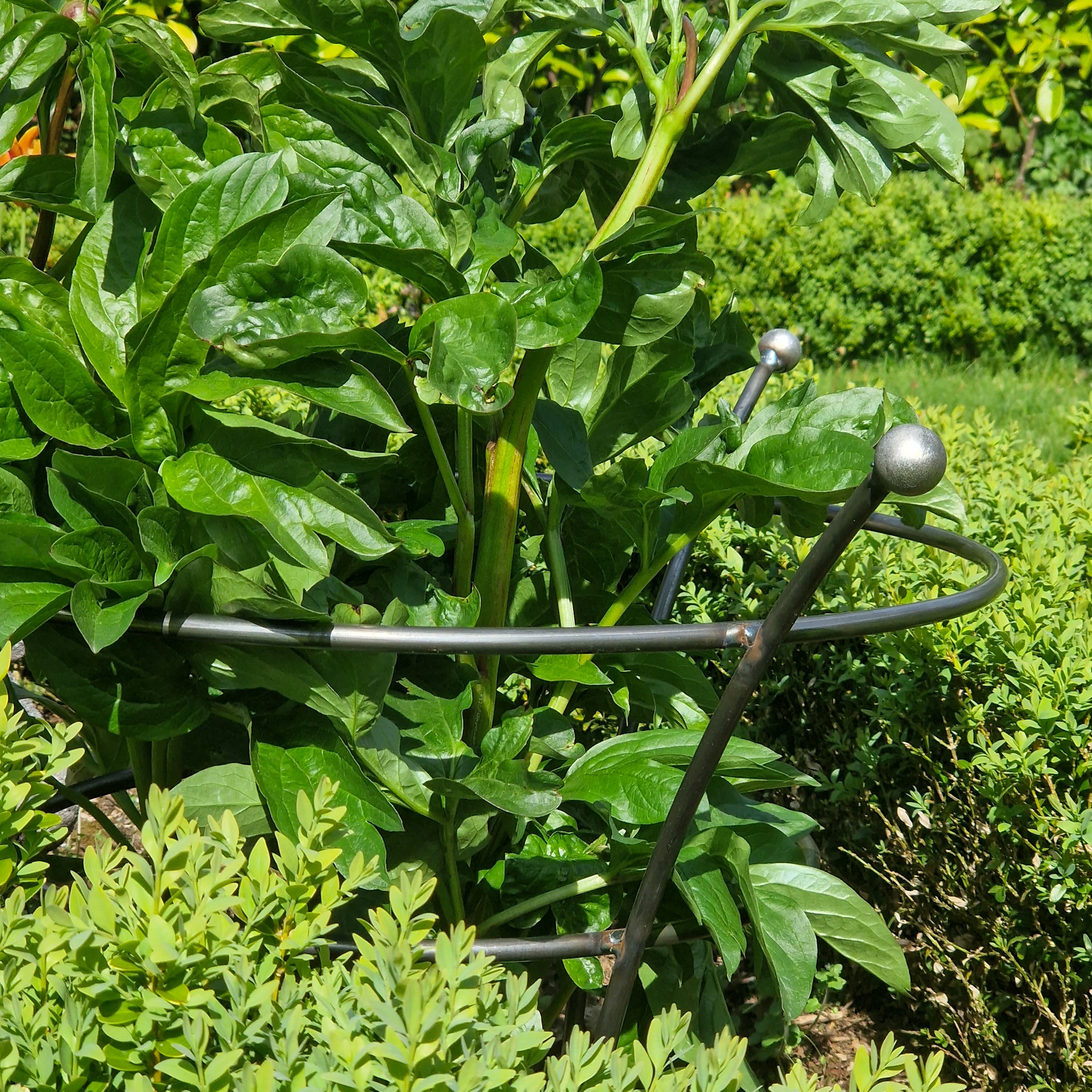In the historic grounds of the Bishops Palace, sandwiched between Hereford Cathedral and the winding (River) Wye, you'll find Anna Lewis working away.

I first met Anna maybe a year and a half ago. Whilst chatting away (something people in horticulture are very good at doing!), I discovered she was the one who took on the task of caring for the gardens surrounding the Bishops Palace along with her Father being Head Gardener at one of my favourite homes in rural Herefordshire. I was thrilled when she invited me around for a personal tour of where she works and what followed was a bit of a history lesson into what you could refer to as 'ecclesiastical gardening'.
On a side note, did you know the Bishop of Hereford was the last Bishop in England to travel on horseback? This continued right into the early 20th Century!
Tell us about how you got into horticulture – where did your passion start?
I come from a very long line of Head Gardeners within my family and was lucky enough to grow up on some large country estates where my father was the Head gardener. School holidays were spent helping him and without realising, he had taught me everything I needed to know. I did go on to university to get a BSc degree in Horticulture as the botany side fascinated me.
What have been some of the best moments in your career?
While at university I won a competition to design a garden for the Malvern Spring RHS show receiving a silver medal which I was very proud of. It helped that I got to meet some of my idols, Alan Titchmarsh and Chris Beardshaw too. More recently I was chuffed that The Bishops Palace gardens made it into the Country Life magazine.
Regarding the Bishops Palace Gardens, can you explain what a bishops garden is and the long history behind them?
Essentially the Bishops Palace is where the Bishop of Hereford lives. In the 12th century a great hall which still exists today was built. This was where the Bishop carried out all of his work. Connected to a chamber on the top lawn where he lived. In medieval times a three story house was built onto the southern end of the great hall facing the river. In the 18th century the house was faced in brick and the chamber was demolished. It was at this time that the gardens were re-landscaped and remain to this day. Four acres of gardens, including a large walled kitchen garden, greenhouses and pigsties etc meant that the Bishops house was completely self-sufficient.

Are there any features that make Herefords Bishops Palace Gardens unique?
The backdrop of the Cathedral is such a unique view that only the Bishops garden can take full advantage of. Steeped in history, it has witnessed so much.
Situated right on the banks of the River Wye, you must have challenges that come with the location. Is there anything you do to combat soil erosion and flooding?
Willow planted on the river banks which I pollard every year helps with bank erosion.

You have been at the garden for a few years now. Over this time, have you had the opportunity to put 'Anna's stamp' on the space?
Over 15 years, I have worked with three different bishops, all of which liked to put their own stamp on the garden. The main structures remain but the planting styles and tastes change. I personally have enjoyed rewilding large areas of the garden. I see a lot of wildlife considering I am in the heart of the city, muntjac deer, foxes, rabbits, pheasants, squirrels, hedgehogs, tawny owls, otters, kingfishers, Peregrine Falcons, plenty of butterflies are just to name a few.

What advice would you give to someone who wants to start a productive vegetable garden?
Draw a plan allowing at least four different areas to allow for crop rotation in future years. Root crops, legumes, brassicas and salad crops although you can use combination planting, for example growing squash in-between sweetcorn. Also mix herbs and flowers to help combat pest and diseases.
What advice would you give to someone who wants to create a wildlife-friendly garden?
Even the smallest areas can help wildlife. Water features such as a bird bath or an old Belfast sink made into a small pond. I did such a feature at the Bishop’s garden and happily watched bees drink from it during the summer. Don’t cut all grass areas, you will be surprised what grows when left.

Do you have any tips for dealing with pests and weeds? What can be done to reduce the amount of time spent weeding?
I mulch the beds with compost from the 11 compost heaps here, I also use leaf mould and sometimes wood chip as we shred the larger woody waste. This helps with suppressing weed growth.
Flowers such as golden marigolds and nasturtiums help with aphid attacks. Also growing herbs such as sage and thyme in amongst vegetables keeps pests away. Alternate rows of carrots and leeks. The scent of the carrots hides it from the onion fly for leeks and the same goes for the carrot root fly.
What do you think are the biggest challenges facing gardeners today? Do you have any key advice for people new to gardening?
Climate change is our biggest challenge, extreme rainfall and droughts events mean we have to rethink some of our usual garden practices. Mulching beds to help prevent moisture loss in the summer. Planting in the autumn to give plants a better chance to get their roots down before the dry conditions. Rethink the plants we use, drought resistant planting schemes. Within the palace gardens we also have changed planting schemes where it regularly floods more each year.














